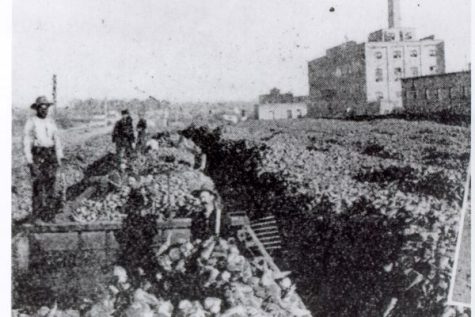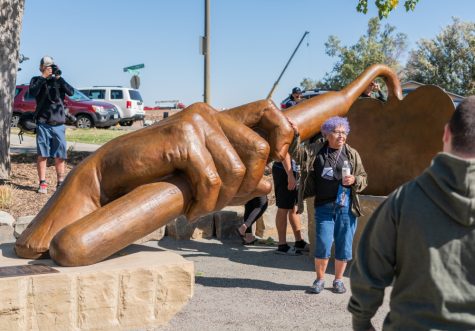The Forgotten History of Fort Collins
There is a long history of Hispanic/Latino contribution in Larimer County. In honor of Hispanic Heritage Month, The Highlighter offers this piece by guest writer Ismael Alvarenga who gives a bit of background to this forgotten history of Fort Collins.
Larimer County was first mapped by Jesus Mariana Modena. After this, many Hispanics from New Mexico migrated to Larimer County to farm and ranch. In 1904, sugar beets replaced their traditional sources of farm work. During WWI, the U.S. needed the help of Mexican workers to provide labor under the assumption that after the season they would return back to their native country.
In Fort Collins, many of Latinos worked on sugar beet farms into the 1920s. Many of these Mexican workers were families (even children) who were paid $11 for every acre of sugar beet thinned. More Latinos from different countries began to join the Mexican workers. The workers joined together to create a community that expanded to churches and neighborhoods.

However, there weren’t many opportunities for Latino families outside of agriculture. In fact, there was a lot of systemic racism Latino families faced from their white neighbors as the population grew.
In school, Latino students would be placed in the back of classes as teachers believed their Latino students were lazy and weren’t smart because they didn’t know how to speak English.
At work, sugar beet workers were paid less which resulted in multiple families living inside tiny homes and having to share what little resources they had.
The Latino community also became targets of the Ku Klux Klan, which had the power to control landlords and store owners. Signs would be set up in the entrance of stores stating “NO MEXICANS OR DOGS ALLOWED.”
It wasn’t until after the Great Depression that many Latinos combated poverty and discrimination. With the help of the Civil Rights Movement, Latinos were given legal rights that outlawed discrimination when it came to housing and employment. Despite those laws passing, however, students in school were still facing issues.
Many Hispanic-led activist groups fought for equality endlessly for decades until 1973. In 1973 the U.S. Supreme Court finally outlawed discrimination in schools.
This history is important as today Fort Collins is the fastest growing area in Colorado when it comes to the Latino population. Since 2010, the area’s Latino population has grown to 41.2%. Knowing the history of Latinos in Colorado shows how the community overcame obstacles that were presented to them and now gives opportunities to younger generations that were not possible before.
The previously mentioned past of Latino discrimination isn’t well known to the general population of Fort Collins, but in 2021 the Mujeres de Colores organization built a monument in Sugar Beet Park that cost $45,000. The monument is titled “The Hand That Feeds” and was built by Frank Garza. The hand in the photo represents the immigrant beet farmers from the 1920s who fed the people of Fort Collins. The hand, holding a short-hoe, shows the struggle that many immigrant workers faced. Its purpose is to remember this often-forgotten part of history.
The Latino community has made significant contributions to Fort Collins and the surrounding communities and deserve recognition for this. They continue to contribute to the community and are working to continue equal pay and representation for themselves and other minority groups.








Betty L Aragon-Mitotes • Jul 10, 2024 at 3:37 pm
Correction: The Hand That Feeds Monument was 300,000, “Mujeres de Colores did fundraising to have this amazing monument installed. It is a bronze monument.
An important quote by Cesar Chavez: ” Preservation of one’s own culture does not require contempt or disrespect for other cultures.”
Betty Aragon-Mitotes
Mujeres de Colores